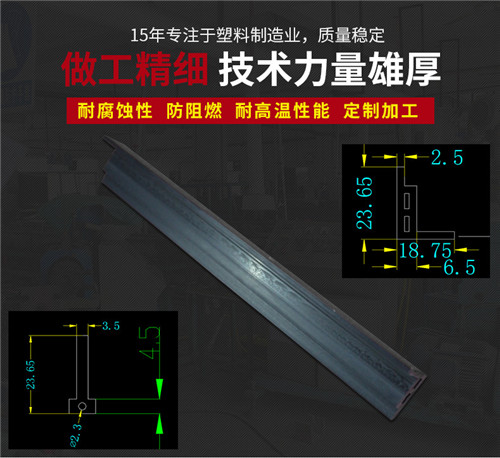
Phone Number :
08 04, 2023

Understanding the flame retardant performance of PVC (Polyvinyl Chloride) soft rubber profiles is crucial in safeguarding structures from fire hazards. PVC soft rubber profiles are widely used in various applications due to their flexibility, durability, and cost-effectiveness. However, their fire resistance properties play a pivotal role in ensuring the safety of buildings, especially in high-risk areas. This article delves into the importance of flame retardancy in PVC soft rubber profiles and its role in fire safety measures.
Flame retardant additives are incorporated into PVC soft rubber profiles during the manufacturing process to enhance their resistance to fire. These additives not only delay or prevent the spread of flames but also reduce the release of toxic gases and smoke during a fire incident.
Firstly, the flame retardant performance of PVC soft rubber profiles minimizes the risk of structural damage in case of fire. By slowing down the burning process, these profiles buy valuable time for firefighting procedures and evacuation. This additional time can be crucial in saving lives and reducing property damage.
Secondly, flame retardant PVC soft rubber profiles greatly reduce the release of toxic gases and smoke during a fire. When exposed to high temperatures, non-flame retardant materials release hazardous fumes that can endanger occupants, hamper evacuation efforts, and hamper visibility for rescue operations. Flame retardant profiles decrease the emission of such harmful substances, mitigating health risks and increasing chances of escape.
Thirdly, flame retardancy in PVC soft rubber profiles contributes to containing the fire. These profiles act as a barrier, limiting the spread of flames to localized areas and preventing fire from spreading rapidly. This containment allows firefighters to focus their efforts and control the fire more effectively, preventing it from escalating and causing widespread damage.
Manufacturers employ several techniques to enhance the flame retardant performance of PVC soft rubber profiles:
1. Incorporation of flame retardant additives: Flame retardant chemicals, such as brominated or phosphorus-based compounds, are added to the PVC formulation. These additives disrupt the combustion process and inhibit flame spread.
2. Surface treatment: Coating the surface of PVC soft rubber profiles with flame retardant materials provides an additional layer of protection against fire. It acts as a shield and delays the ignition and propagation of flames.
3. Material composition: The selection of PVC material with inherently flame retardant properties can significantly improve the performance of soft rubber profiles in fire safety. These materials have built-in resistance to ignition and fire spread.
In conclusion, understanding the flame retardant performance of PVC soft rubber profiles is crucial for ensuring fire safety in buildings. These profiles play a vital role in delaying the spread of flames, reducing toxic gas emissions, and containing fires. By incorporating flame retardancy measures during production, manufacturers can provide effective fire-resistant solutions, safeguarding lives, and minimizing property damage. Emphasizing the significance of flame retardant materials in fire safety regulations and implementing their use in constructions will undoubtedly contribute to safer environments.